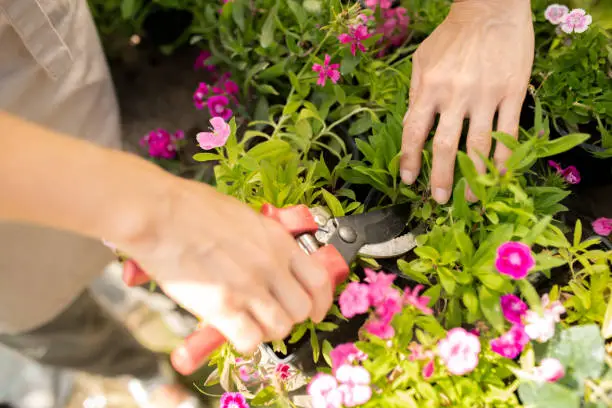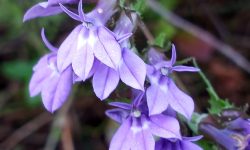Pruning dianthus is an essential practice for gardeners seeking healthy plants and extended flowering seasons. These colorful, fragrant flowers thrive when their growth is managed through careful trimming. Proper pruning removes dead or fading blooms, encourages bushier growth, and prevents disease, ensuring that the plant remains vibrant and productive throughout the season.
Beyond aesthetics, regular pruning helps dianthus allocate energy efficiently toward new flower development instead of seed production. Understanding when and how to prune can significantly impact the longevity and overall health of the plants. By following the right techniques, gardeners can enjoy consistent blooms, lush foliage, and a well-maintained garden display that highlights the beauty and charm of dianthus year after year.
Why Pruning Dianthus Matters

Pruning dianthus is more than a cosmetic task; it directly impacts plant health, flowering longevity, and overall garden aesthetics. By removing spent flowers and trimming leggy stems, gardeners help the plant focus its energy on producing new buds instead of seed formation. This energy redirection encourages continuous flowering and results in a fuller, more vibrant plant. Proper pruning also stimulates branching, which increases the number of potential blooms, providing a consistent, colorful display that enhances garden beauty throughout the growing season. Maintaining healthy foliage is equally important, as it supports photosynthesis and strengthens stems for heavier floral production.
Regular pruning reduces the risk of disease and pest infestations. Dead or decaying flowers can harbor fungal spores or attract insects that damage healthy growth. By cutting back affected areas, air circulation improves within the plant canopy, lowering humidity and preventing fungal development. Additionally, removing old or crowded stems prevents overcrowding, which often leads to weaker growth and reduced flowering. This proactive approach ensures that dianthus remains strong, resilient, and capable of sustaining blooms over an extended period, making it easier to manage in the garden while maximizing floral output.
Strategic pruning also shapes the plant, preventing it from becoming overgrown, sparse, or uneven. Well-maintained dianthus displays a neat, compact form that integrates harmoniously into garden beds, borders, or containers. This controlled shaping encourages denser foliage and more flowering sites, allowing the gardener to enjoy a visually striking and well-organized planting. For gardeners aiming for long-lasting beauty, vibrant blooms, and healthy plants, understanding and implementing proper pruning techniques is essential. Pruned dianthus not only thrives aesthetically but also remains robust, disease-resistant, and productive, creating a flourishing, dynamic garden environment year after year.
When to Prune Dianthus
Timing is crucial when pruning dianthus to ensure maximum flowering and plant health. The best period for light pruning is during early spring, just as new growth begins to emerge. This encourages the plant to develop a bushier structure and increases the number of blooms throughout the season. Removing dead or damaged stems at this stage also prevents disease and prepares the plant for vigorous growth. Spring pruning sets the foundation for a healthy, productive flowering cycle that lasts well into summer.
In addition to spring trimming, deadheading spent flowers throughout the blooming season is essential. Regularly removing faded blooms prevents the plant from diverting energy into seed production and stimulates new flower development. Monitoring the plant weekly allows gardeners to identify and remove weak or damaged stems promptly. Consistent attention to deadheading ensures that dianthus maintains its aesthetic appeal, remains compact, and produces a continuous display of vibrant flowers, contributing to a thriving and colorful garden environment.
Late-season pruning, after the main flowering period, also plays a significant role in maintaining plant health. Cutting back older stems and removing residual blooms rejuvenates the plant, encouraging strong root and foliage development in preparation for the next growing season. This post-bloom maintenance enhances plant resilience during colder months and sets the stage for early spring regrowth. By adhering to proper pruning schedules—spring shaping, ongoing deadheading, and post-bloom rejuvenation—gardeners can enjoy healthy dianthus with longer-lasting, abundant flowering each year.
Tools and Techniques for Pruning Dianthus
Proper tools are essential for effective pruning of dianthus, ensuring clean cuts that minimize plant stress. Sharp, clean pruning shears or scissors are ideal for removing spent flowers, leggy stems, or damaged foliage. Using dull tools can crush stems, slowing recovery and increasing susceptibility to disease. Disinfecting tools between plants prevents the spread of pathogens and maintains overall garden health. Maintaining a selection of pruning tools appropriate for different stem sizes improves efficiency and encourages precise trimming.
Techniques for pruning dianthus vary depending on the plant’s age and growth stage. For young plants, light trimming encourages branching and compact growth. Removing weak or damaged shoots allows the plant to concentrate energy on developing robust stems and abundant blooms. For established plants, deadheading spent flowers and trimming leggy or overgrown stems promotes continuous flowering. Strategic cuts just above a leaf node or lateral branch stimulate new growth, while careful shaping ensures a balanced and aesthetically pleasing plant structure.
Combining proper tools with correct techniques maximizes both bloom quantity and plant health. Regular observation helps identify areas needing attention, while maintaining consistent pruning schedules supports sustained flowering. Gardeners should also consider environmental factors, such as temperature and soil moisture, to avoid unnecessary stress during pruning. By implementing these tools and techniques, dianthus can maintain vibrant blooms, compact foliage, and overall vigor. Thoughtful pruning enhances the visual appeal of garden beds, borders, and containers, allowing gardeners to enjoy a long-lasting, flourishing display throughout the growing season.
Pruning Techniques for Different Dianthus Varieties
Different dianthus varieties require slightly varied pruning approaches to maximize blooms and maintain plant health. For perennial dianthus, light pruning in early spring removes winter-damaged stems and promotes vigorous growth. Cutting back old, woody growth encourages fresh shoots and maintains a compact, bushy form. Regular deadheading throughout the growing season prevents energy diversion to seed production, ensuring continuous flowering. This combination of seasonal shaping and ongoing maintenance allows perennial varieties to thrive year after year.
Annual dianthus requires a more attentive pruning schedule due to its shorter life cycle. Since these plants complete their growth and flowering within one season, removing spent blooms promptly is critical to prolong the flowering period. Pinching back young stems encourages branching, resulting in a fuller plant with multiple bloom sites. Careful monitoring ensures that weak or leggy stems are trimmed, keeping the plant compact and aesthetically appealing. For both border and container planting, timely pruning maximizes flower production and maintains a healthy structure.
For hybrid or specialty varieties, understanding their specific growth habits is essential. Some hybrids may produce larger blooms but fewer flowers per stem, so selective pruning focuses on removing faded flowers while preserving strong stems. Compact or dwarf varieties benefit from occasional tip trimming to maintain a uniform shape and encourage multiple flowering points. Tailoring pruning strategies to each dianthus variety ensures optimal performance, vibrant displays, and extended bloom seasons. By adapting techniques to growth habits, gardeners can enjoy the full potential of their dianthus collection while sustaining plant health and garden appeal.
Seasonal Pruning Schedule for Dianthus
Spring Pruning
Spring is the optimal time to shape dianthus and remove winter-damaged growth, which can inhibit new bud formation if left untrimmed. Begin by cutting back any dead, brittle, or discolored stems, which encourages fresh shoots and maintains plant vigor. This light pruning stimulates branching and increases the potential number of blooms for the season. Removing old foliage also enhances airflow around the plant, reducing disease risk and preparing it for consistent flowering. Proper spring pruning ensures that dianthus can allocate energy efficiently, supporting strong stem growth and abundant flowers.
In addition to shaping, spring is ideal for assessing plant health. Inspect stems for pests or fungal infections and remove any affected areas promptly. Trimming just above a healthy leaf node encourages lateral growth, resulting in a fuller, compact plant. Gardeners can also adjust plant spacing during this time to prevent overcrowding, further promoting airflow and reducing the likelihood of fungal issues. Combining structural pruning with careful monitoring sets the foundation for a vibrant, long-lasting flowering period. Gardeners who follow a consistent spring pruning routine enjoy a visually appealing and productive dianthus display throughout the warmer months, with continuous, colorful blooms.
Summer Maintenance
Summer requires ongoing pruning to sustain continuous blooms and maintain plant vitality during hotter months. Deadheading spent flowers prevents seed formation and directs energy toward new bud production. Frequent trimming of leggy or overgrown stems maintains compact growth and keeps plants visually attractive in garden beds or containers. Regular observation allows timely removal of stressed, wilted, or damaged stems, minimizing disease and encouraging prolonged flowering. Proper summer pruning ensures that dianthus remains dense, healthy, and vibrant throughout peak flowering periods.
Proper watering and nutrient management complement pruning during summer. Evenly moist soil supports healthy growth, while light fertilization boosts flower production and strengthens foliage. Pruning combined with deadheading ensures that dianthus continues to produce abundant blooms despite seasonal heat and occasional drought stress. Gardeners who maintain this summer care routine can enjoy abundant, vibrant flowers for weeks, maximizing the plant’s aesthetic and horticultural value. The combination of attentive pruning, adequate nutrition, and careful watering keeps dianthus strong and visually stunning throughout the season.
Fall and Winter Preparation
As flowering slows in fall, pruning focuses on post-bloom rejuvenation. Removing spent flowers and lightly trimming stems prepares the plant for dormancy, encouraging strong root development and sturdier stems for the following spring. Cleaning up old foliage reduces pest and disease risk over winter and keeps the garden tidy. This preparation is particularly important in areas with harsh winters, as it ensures the plant can survive cold conditions and return vigorous.
In colder climates, adding mulch around the base insulates roots and protects them from frost. Container-grown dianthus may need relocation to sheltered areas with reduced watering to prevent root damage. Fall pruning can also include lightly shaping plants to maintain aesthetic appeal in the garden, even during dormancy. By combining fall pruning with winter preparation, gardeners ensure dianthus survives dormant months and returns healthy and ready for a vibrant display in the next season. Thoughtful seasonal pruning maximizes long-term plant health, supports prolific blooming, and maintains a dynamic, colorful garden year after year.
Common Pruning Mistakes to Avoid
Over-Pruning
Over-pruning is a frequent mistake that can weaken dianthus plants and reduce flowering. Cutting back too much foliage or removing too many stems at once stresses the plant, diverting energy away from bloom production. This often results in sparse, leggy growth, delayed flowering, and reduced plant vigor. Gardeners should focus on selective trimming, removing only spent blooms, damaged stems, or weak growth. Maintaining a balanced approach ensures that the plant retains sufficient leaves for photosynthesis, which supports strong root development and healthy stems throughout the season.
Proper timing is also crucial to avoid over-pruning. Early spring pruning should be light, and ongoing deadheading during the growing season should be moderate. Overzealous trimming in summer can expose stems to sunburn or heat stress, further reducing the plant’s ability to produce new flowers. By following a measured pruning routine, gardeners can maintain both aesthetics and plant health, preventing unnecessary setbacks in bloom performance while promoting a continuous, vibrant display.
Neglecting Deadheading
Failing to deadhead spent flowers is another common mistake that shortens the flowering period. When old blooms are left on the plant, energy is redirected toward seed production rather than new bud formation. This reduces the number of flowers produced and diminishes overall plant vigor. Regularly removing faded blooms encourages continuous flowering, keeps the plant compact, and maintains an attractive garden appearance.
Gardeners should monitor dianthus weekly for spent flowers and prune them promptly. Paying attention to weaker or crowded stems while deadheading further improves air circulation and reduces disease risk. Combining timely deadheading with structural pruning ensures the plant remains dense, healthy, and capable of producing vibrant, abundant blooms throughout the season. Thoughtful maintenance prevents energy loss and maximizes the flowering potential of every dianthus plant.
Incorrect Tool Use
Using dull or dirty tools can damage stems, crush plant tissue, and increase the risk of infection. Pruning shears should be sharp and sterilized between cuts to maintain plant health. Avoid tearing or breaking stems when removing blooms, as jagged cuts hinder healing and invite fungal or bacterial infections. Selecting the right tool for the stem size is equally important. Small, precise scissors or shears work best for delicate dianthus stems, while larger branches may require bypass pruners.
Consistently maintaining and cleaning tools reduces the chance of spreading pests or disease from one plant to another. Proper technique and tool care ensure cleaner cuts, faster recovery, and healthier, longer-lasting blooms. By paying attention to these details, gardeners prevent common mistakes that compromise growth and flowering performance. Healthy tools, precise cuts, and correct pruning habits maximize the aesthetic appeal of garden beds and containers while supporting the overall vitality of dianthus plants.
Aftercare and Maintenance Post-Pruning
Proper aftercare following pruning is essential to help dianthus recover quickly and maintain healthy growth. Immediately after trimming, plants benefit from light watering to reduce stress and support new shoot development. Ensuring the soil remains evenly moist—but not waterlogged—promotes root absorption and strengthens stems for upcoming blooms. Mulching around the base helps retain moisture, moderates soil temperature, and suppresses weeds, creating optimal conditions for the plant to thrive after pruning. Additionally, maintaining consistent soil conditions prevents sudden stress that can delay flowering or weaken the plant.
Fertilization plays a vital role in post-pruning maintenance. Applying a balanced, slow-release fertilizer encourages vigorous growth and supports abundant flower production. Liquid feeding during peak bloom periods can provide an extra nutrient boost, especially for container-grown dianthus or plants in nutrient-poor soils. Consistent monitoring of plant health, including checking for pests, fungal infections, or nutrient deficiencies, ensures timely intervention and preserves the plant’s vitality. Proper nutrition enhances recovery, strengthens stems, and promotes sustained flowering.
Pruned dianthus also benefits from ongoing structural care. Regularly removing faded blooms and trimming weak or crowded stems encourages compact growth and continuous flowering. Observing light exposure and air circulation around plants further enhances post-pruning recovery and prevents stress-related issues. Attention to environmental conditions, such as avoiding extreme heat or prolonged wet periods, protects newly pruned growth. By combining appropriate watering, fertilization, structural upkeep, and environmental management, gardeners can maximize the aesthetic appeal, flowering potential, and overall health of dianthus. This careful attention ensures vibrant, long-lasting blooms and a thriving, visually appealing garden display throughout the season.
Propagation After Pruning
Pruning dianthus offers an excellent opportunity for propagation, allowing gardeners to create new plants from healthy stems. Softwood cuttings taken from recently pruned, non-flowering shoots root more easily and establish quickly. Select strong, disease-free stems, ideally 3 to 5 inches long, and remove any lower leaves to expose nodes for rooting. Using a well-draining propagation medium, such as a mix of perlite and peat, ensures moisture retention without waterlogging, which promotes successful root development.
After inserting the cuttings, maintaining proper humidity and warmth is critical. Covering the cuttings with a plastic dome or placing them in a propagator keeps moisture levels consistent and prevents desiccation. Indirect light and moderate temperatures encourage root formation while avoiding stress from direct sunlight. Regularly checking soil moisture ensures that the cuttings do not dry out, as adequate hydration is essential for initiating roots. With proper care, most cuttings develop a strong root system within a few weeks, ready for transplantation into garden beds or containers.
Once roots are established, gradually acclimating young plants to outdoor conditions strengthens their resilience. Transplanting into well-prepared soil with adequate nutrients supports continued growth and flower production. Propagated dianthus benefits from ongoing care, including proper watering, fertilization, and occasional trimming to maintain compact growth. By combining careful pruning with propagation techniques, gardeners can multiply their plants, enjoy extended blooms, and maintain a vibrant garden display, maximizing both aesthetic and practical value. This approach ensures a continuous supply of healthy, colorful dianthus throughout the growing season.
Troubleshooting Pruning Issues
Slow or No Regrowth
One common issue after pruning dianthus is slow or lack of regrowth. This usually occurs when too much foliage is removed or pruning is done during stressful environmental conditions. Plants may redirect energy to root maintenance rather than new shoots, resulting in a temporary halt in visible growth. To encourage regrowth, ensure proper watering, balanced fertilization, and avoid pruning during extreme heat or drought. Providing rich, well-draining soil and adequate sunlight supports recovery and stimulates fresh growth.
Monitoring plants after pruning helps detect potential problems early. If regrowth is slow, light trimming of additional stems may stimulate branching while maintaining soil moisture prevents stress. Gradually adjusting the plant to full sunlight, if previously shaded, encourages robust development and healthier foliage. Consistent care, such as weekly checks for moisture levels and pest infestations, also supports regrowth. By combining careful observation with proper environmental management, gardeners can restore vigor and ensure continuous flowering, maximizing the aesthetic appeal of dianthus throughout the growing season.
Leaf Yellowing or Wilting
Yellowing or wilting leaves often indicate over-pruning, insufficient water, or nutrient deficiency. Removing too much foliage can reduce photosynthetic capacity, while dry soil or imbalanced nutrients further stress the plant. Timely intervention includes maintaining consistent moisture, providing a balanced fertilizer, and avoiding aggressive cutting. Ensuring leaves have sufficient exposure to sunlight promotes energy production and new bud formation.
Regular monitoring allows gardeners to adjust care routines promptly. Inspect stems and leaves for pests, fungal infections, or environmental stressors that could compound post-pruning issues. Light trimming of crowded growth improves airflow and prevents disease, while mulch helps retain soil moisture and regulate temperature. Combining proper pruning practices with attentive aftercare helps restore plant health, maximizes bloom potential, and maintains vibrant, resilient dianthus throughout the season.
Stem Dieback
Stem dieback is another challenge following pruning, often caused by cutting too close to older, woody stems or introducing disease. Diseased or damaged areas must be removed carefully to prevent further spread. Using sharp, sterilized tools and making clean cuts above healthy nodes promotes recovery and prevents infection.
Maintaining good airflow, avoiding overcrowding, and ensuring adequate sunlight exposure reduces fungal infections that contribute to dieback. Regular inspections allow gardeners to detect early signs of damage and intervene promptly. By addressing dieback quickly and following proper pruning protocols, gardeners can redirect energy toward healthy growth, ensuring a vigorous, flourishing, and continuously blooming dianthus display throughout the season. Proper attention to these details prevents long-term setbacks and supports sustained flowering success.
Enhancing Dianthus Bloom Longevity After Pruning
Proper pruning techniques are only the first step to ensuring a long and vibrant blooming season for dianthus. After pruning, it is crucial to provide optimal care to maximize flower longevity. Timely deadheading encourages continuous bloom production and prevents the plant from diverting energy to seed formation. Removing faded flowers promptly ensures that nutrients and energy are redirected toward producing new buds, resulting in a longer, more colorful display.
Nutrient management complements post-pruning care. Applying a balanced, slow-release fertilizer supports sustained flowering by providing essential nutrients for growth, stem strength, and vibrant flower production. Light liquid feeding during peak bloom periods can boost energy reserves, especially in container-grown dianthus or plants in less fertile soils. Consistent watering, avoiding both drought stress and waterlogging, maintains optimal plant health. Proper soil moisture ensures that roots can absorb nutrients efficiently, supporting stronger stems and more abundant blooms.
Environmental factors also play a critical role in bloom longevity. Ensuring adequate sunlight and good airflow around the plants reduces stress and prevents disease, which can shorten flowering periods. Mulching around the base preserves soil moisture and moderates temperature fluctuations, creating stable growing conditions. Regular monitoring allows gardeners to identify any early signs of pests, disease, or nutrient deficiency, enabling timely corrective action. By combining careful pruning, nutrient management, proper watering, and environmental attention, gardeners can significantly extend the blooming period of dianthus, enjoying a vibrant, colorful, and healthy garden display throughout the season.
FAQ for Pruning Dianthus
How often should I prune dianthus to maintain continuous blooms?
Dianthus should be lightly pruned in early spring to remove winter-damaged stems and spent blooms. Ongoing deadheading throughout the growing season encourages new flower production. Light trimming of leggy stems every few weeks helps maintain a compact shape and supports continuous blooming, ensuring the plant remains vibrant and healthy.
Can pruning too much harm my dianthus plants?
Yes, over-pruning can stress dianthus, reducing flowering and weakening stems. Removing excessive foliage limits photosynthesis, slowing growth and energy allocation. It is essential to prune selectively, removing only spent flowers, damaged stems, or weak growth while retaining enough leaves to support healthy development and abundant blooms throughout the season.
When is the best time of day to prune dianthus?
The best time to prune dianthus is during the morning when temperatures are cooler and plants are fully hydrated. Morning pruning reduces stress, prevents heat-related wilting, and allows cut surfaces to heal during daylight hours. Avoid pruning in extreme heat or late afternoon to minimize plant shock and ensure healthy recovery.
What tools should I use for pruning dianthus?
Use sharp, sterilized pruning shears or scissors to make clean cuts. Dull tools can crush stems and increase infection risk. Select the appropriate tool for stem thickness and always clean tools between cuts. Proper tool selection ensures precise trimming, promotes quick healing, and maintains plant health for longer flowering periods.
How can I extend the blooming period after pruning?
To extend blooms, remove spent flowers regularly, provide balanced fertilization, and maintain consistent soil moisture. Ensure adequate sunlight and airflow, avoid overcrowding, and monitor for pests or disease. Combining these practices with careful pruning encourages continuous flowering, compact growth, and prolonged, vibrant blooms throughout the season.
Conclusion
Proper pruning is the key to maintaining healthy, vibrant dianthus and enjoying long-lasting blooms. By carefully removing spent flowers, trimming damaged stems, and following seasonal guidelines, gardeners can encourage continuous growth and abundant flowering. Combining pruning with consistent watering, balanced fertilization, and optimal sunlight ensures plants remain strong and visually stunning. Paying attention to environmental conditions and avoiding common mistakes maximizes bloom potential and overall plant health. With thoughtful care and maintenance, dianthus thrives throughout the season, transforming any garden into a colorful, lively, and captivating display that delights the eye and enhances outdoor spaces.






